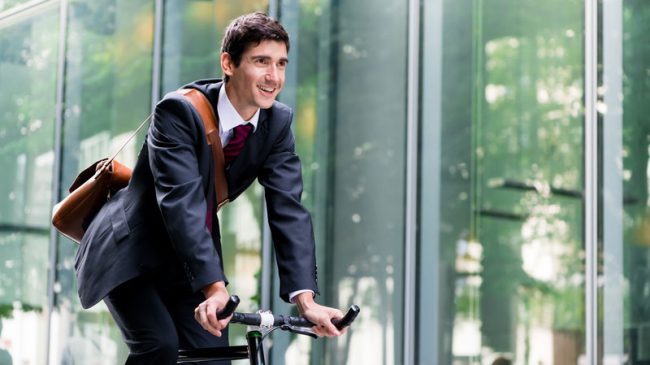Southern California has long been home to some of the nation’s worst traffic congestion. Across the region, planners are looking for alternatives to commuting alone by car.
Orange County is fortunate to have 1,000 miles of bike lanes, including off-street paths and on-street lanes. The Orange County Transportation Authority has a variety of cycling projects in the works, including a “plan to eventually connect the long trails that exist along the Santa Ana riverbed, the San Gabriel River and Pacific Coast Highway to create a 74-mile loop,” the Register reported.
Los Angeles recently adopted a long-range plan that would add 300 miles of protected bike lanes across the city.
As cities look to increase bicycling’s role in daily commuting, they are taking a couple of steps, including converting existing car lanes on busy roadways into bike lanes, which often worsens traffic congestion and angers motorists. Other cycling plans envision an extensive network of off-street cycling paths, which would be fine for motorists – except these plans often rely on diverting gas taxes and taking existing transportation funds away from road projects.
Approximately 1 percent of Orange County residents cycle to work each day, which makes it challenging to justify spending a significant amount of transportation money on cycling.
Southern California should focus on cost-effective cycling improvements that can increase cycling safety and encourage additional trips by bike without worsening the area’s travel times for motorists.
Considerable research led by John Forrester, a California resident and transportation engineer, indicates that the safest, most-used bicycling lanes for transportation purposes are on-street bike lanes – the ones you see on the right-hand shoulder of roads. Off-street lanes and paths are more appealing to recreational cyclists than bike commuters, who are usually looking for more direct routes.
Increasing cycling’s share of commuting will require several changes. The good news is that bicycling lanes can be added to many roads without reducing their automobile capacity.
For roadways with four or more lanes, auto lanes can be safely narrowed from 12 feet to 10.5 feet, and a 3-foot wide bike lane can be added. For roads with two lanes, lanes can often be narrowed from 12 feet to 9.5 feet, creating a 2.5-foot bike lane in each direction. And for many local neighborhood streets with lower speed limits, signage can alert motorists to share the lanes with bicycles. Vehicles can either follow bicyclists or move around them.
Another important component cities must address is safety. Bicyclists should feel safe on the roads. Safety is the No.1 reason commuters say they avoid cycling to work. A state law passed last year requires state motorists to maintain a three-foot barrier when passing cyclists. Unfortunately, enforcement has been sporadic and mixed at best, and the penalty seems designed more to fund California’s court system than to actually improve road safety. All revenue from those tickets should go to improving road and bike safety or constructing infrastructure.
Another component that can help determine cycling’s popularity is the availability of bike infrastructure at peoples’ places of work. Many start-up and tech companies have added bike showers, locker rooms and other facilities to make cycling a more realistic option for their employees. If cities and companies have bike facilities and also charge motorists the fair, market rate for parking spots, bicycling may become more attractive.
Orange County and the rest of the region are wise to embrace commuting options, including bicycling. The key, however, is to implement long-range plans that improve cycling infrastructure without making the region’s auto travel times even worse. Even if the most optimistic 30-year goals are achieved, the vast majority of Southern Californians will still travel by car. Long-range plans can’t lose sight of that.
Baruch Feigenbaum is a transportation policy analyst at Reason Foundation. This article originally appeared in the Orange County Register.

Photo 102514275 © Arne9001 - Dreamstime.com
